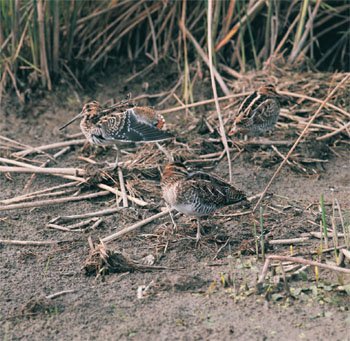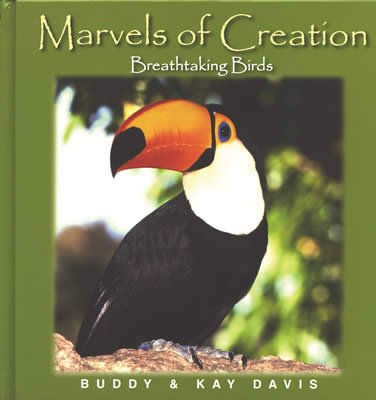Common Snipe
How many of us have gone snipe hunting as children at dusk?

How many of us have gone snipe hunting as children at dusk? With flashlight in hand, we looked through bushes, behind rocks and trees, only to be fooled. We finally realized we had been set up and there is no such thing as a snipe. But there is such a creature! It is a small brown bird with a long, pointed beak. It is most active in the evening and early morning.
This shy bird is a close relative of the woodcock, inhabiting marshes and wetlands. It flies in a zigzag pattern, holding its beak in a downward position.
The eyes of the snipe are black and set well back in the head. The plumage is camouflaged and is barred tan to a deep reddish-brown and is mottled, with a cream-colored belly. The general appearance of the common snipe is similar to other waders such as the sandpiper. However, the thin legs of the snipe are shorter.
The dark brown bill is flexible and soft skinned, and the tip is almost prehensile as it is used to probe inside the soft earth searching for food. The bill is so flexible that the snipe can eat some food while the beak is buried in the soil. The diet of the snipe consists of snails, insects, and a wide selection of worms.
The snipe is also famous for its courtship. This small bird flies high then dives, holding its wings half-closed, beating them slowly while fanning its tail. The air passing through produces the well-known drumming sound of the snipe.
All snipes nest on the ground with the exception of the New Zealand snipe, which uses the burrows of other birds. In the hollow grass-lined nest, a clutch of three to four olive-brown eggs is laid. The female incubates the eggs for 19 to 20 days. The young leave the nest almost immediately. They are fed by both parents and can fly in about two weeks.
Snipes can be found in North America, New Zealand, Australia, New Guinea, Asia, Africa, and Europe.
Common Snipe
Charadriiformes • Scolopacidae
Gallinago gallinago
Length: 102 inches (27 cm)
Weight: 114 ounces (320 g)
Life Span: 20 years
Special Design Feature: The long bill of the snipe is particularly flexible
at the tip, allowing it to probe and eat while the beak is buried in soil. Did
you know? Because of children’s games, many think the snipe to be a myth. The
snipe is a very unique and real bird.
Marvels of Creation: Breathtaking Birds
This spectacular book brings the world of feathered creatures alive in a unique and colorful way.
Browse Kids Book- © 2025 Answers in Genesis
- Privacy Policy
- Contact
- About

